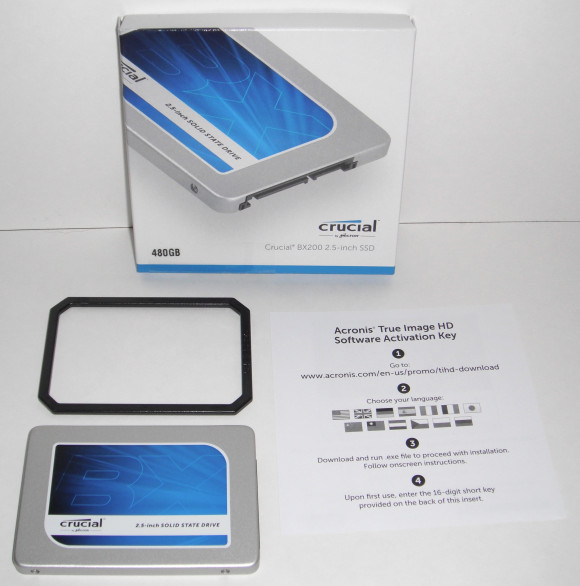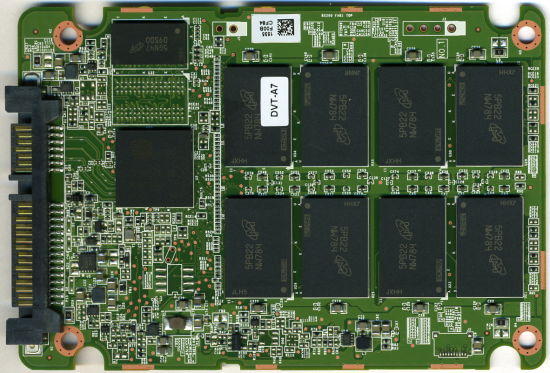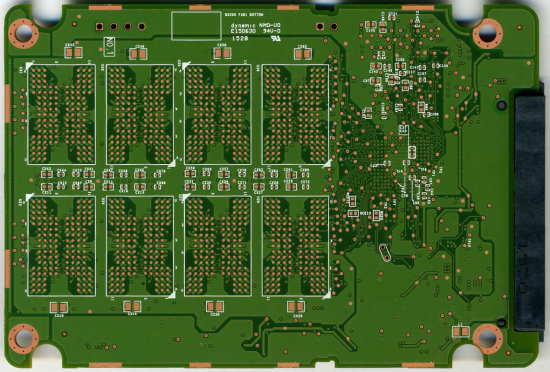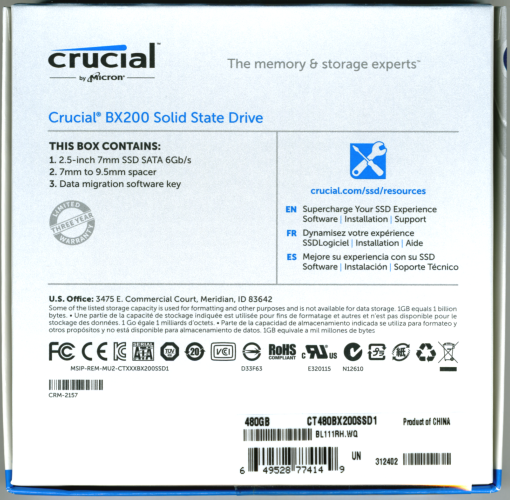The BX100 comes in a small, white box. While there aren't a lot of technical details, the packaging provides basic information like the drive's capacity and a list of the box's contents. Inside, you'll find the SSD, a mounting spacer for use with traditional 9.5mm drive bays, and a small piece of paper with a software activation key for Acronis True Image HD. If you're looking for an install guide or warranty information, you will need to visit Crucial's support website.

Physical Features:
The BX200 looks very similar to Crucial's other 2.5-inch SSDs. The outer casing is made entirely out of metal and is covered by a grey, textured finish. The top of the drive also has a large, blue and gray sticker showing that it is part of Crucial's BX series.


As I mentioned earlier, the BX200 uses Silicon Motion's new SM2256 controller. The SM2256 is powered by a 32-bit RISC CPU and is equipped with a 4-channel flash interface that supports up to 32 NAND flash devices. The controller also offers support for 256-bit encryption and the TCG Opal protocol, but, for whatever reason, they are not enabled on the BX200.


For the 480GB version of the BX200, Crucial opted to use Micron's 16nm 128Gb TLC NAND flash. Looking at the picture above, you can see that there are eight 64GB NAND flash packages on top of the PCB. The drive also has a 512MB Micron LPDDR3 memory chip that is used for caching.



